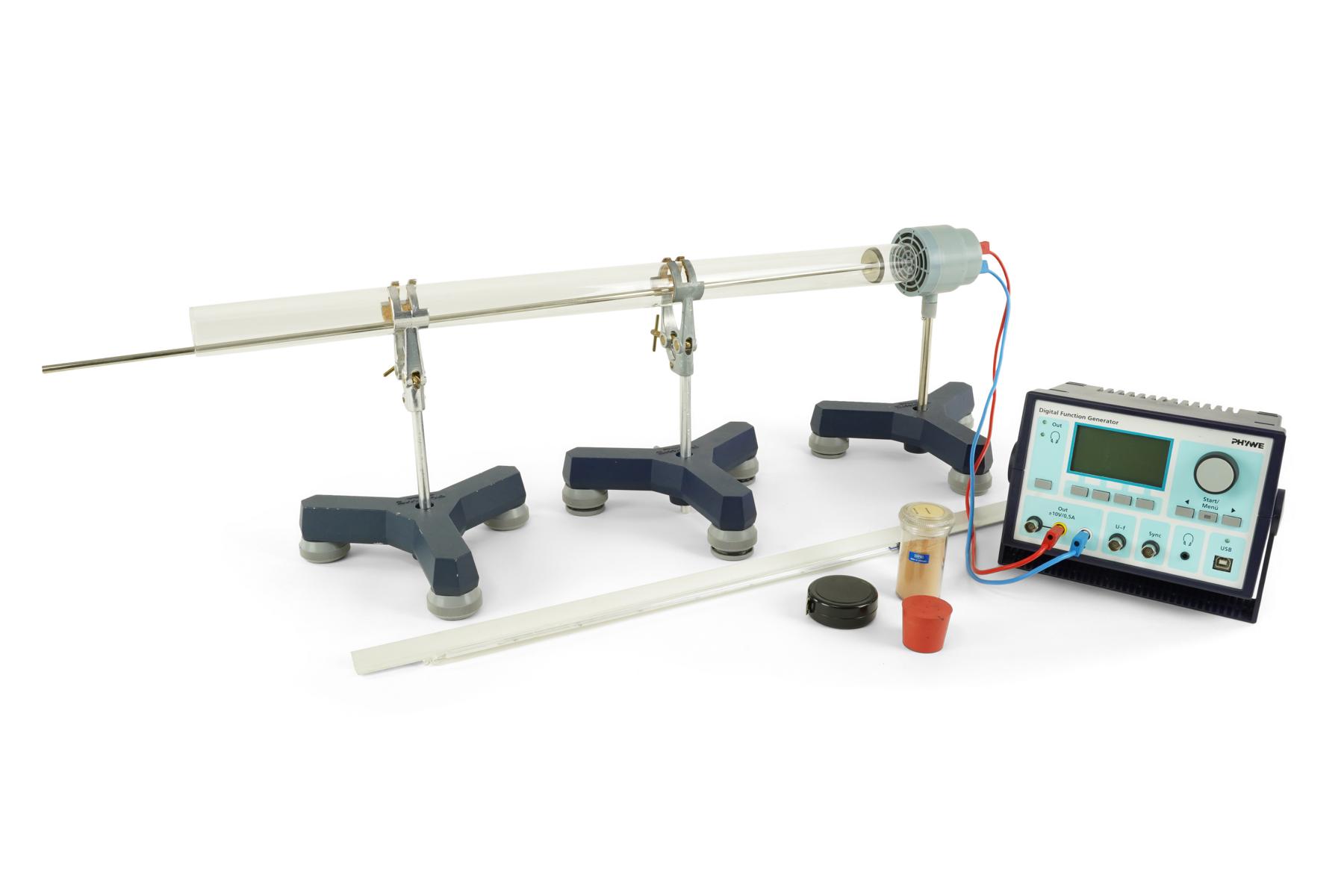Principle
Cork dust in a glass tube is set into tiniest motion by a sound wave. If the frequency of the sound wave matches the natural frequency of the volume in the glass tube, a standing wave will form. The cork dust then assembles in visible patterns that show the nodes of pressure and motion of the standing wave. From the length of the volume and the number of the nodes the velocity of sound in the tube can be calculated for each natural frequency.
Benefits
- Two experiments in one: determination of the sound velocity and determination of the wavelength of standing waves
- Easy frequency setting thanks to digital function generator
Tasks
Determine the velocity of sound in air using Kundt's tube at different lengths of volume.
Learning objectives
- Longitudinal waves
- Sound velocity in gases
- Frequency
- Wavelength
- Stationary waves
- Natural frequency

